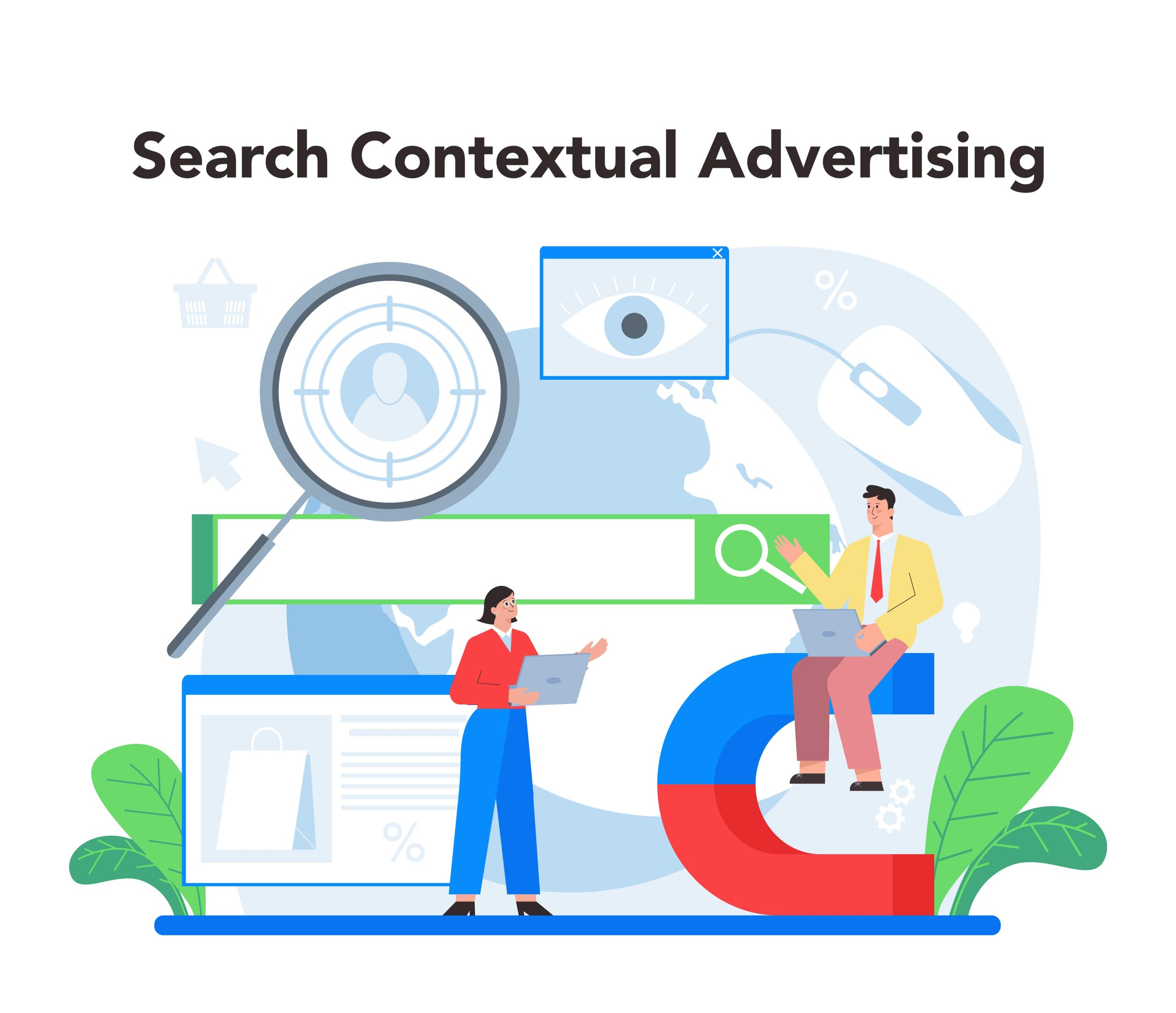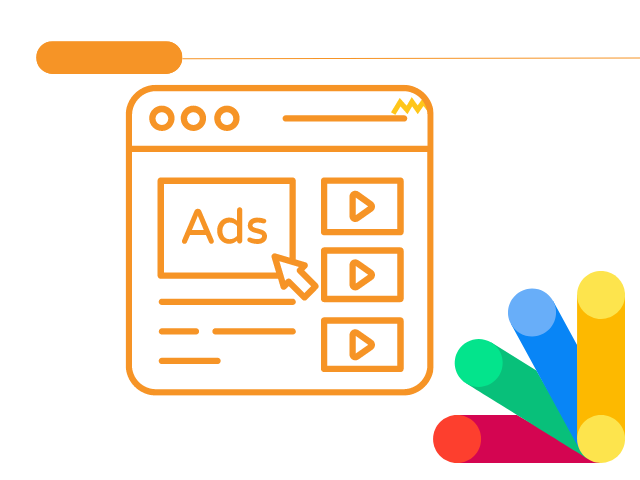Are you a laundry business owner looking to attract more customers? Imagine your services being the first thing people see when they search for laundry solutions online.
With the right Google PPC Ads campaign, you can do just that—and see a significant return on investment (ROI) too!
But where do you start? Whether you’re an entrepreneur, franchise owner, or partner, setting up your first Google PPC campaign might seem overwhelming.
Don’t worry! This guide will walk you through the simple, effective steps to optimize your Google Ads campaign and increase your ROI.
Why wait? Dive in and learn how you can grow your business today by making Google Ads work for you!
Introduction to Google PPC Ads Campaigns:
What is Google PPC?
Pay-Per-Click (PPC) advertising is a simple yet powerful tool to increase your laundry business’s visibility. In PPC, you only pay when someone clicks on your ad—hence the name “pay-per-click.”
This model allows you to place your business right at the top of Google search results.
Why is PPC so important for laundry businesses?
- Immediate Visibility: Your ads appear right when potential customers search for laundry services.
- Targeted Reach: You can target specific keywords like “laundry service near me” to reach local customers.
- Cost Control: You decide how much to spend and only pay for actual clicks, making it budget-friendly.
By running a well-structured PPC campaign, you can optimize your Google Ads campaign and attract more customers, driving growth for your laundry business.
Understanding ROI in PPC
ROI, or Return on Investment, is a key metric that shows how effective your PPC campaigns are. Simply put, ROI measures the profit you make from your ads compared to the money you spend.
Why is ROI crucial in Google Ads?
- Measurable Success: It directly shows whether your investment is yielding returns.
- Optimized Spending: A high ROI means you’re getting more value from each dollar spent.
- Business Growth: Focusing on ROI ensures that your advertising efforts contribute to the long-term success of your laundry business.
To increase Google Ads ROI, it’s essential to monitor and tweak your campaigns regularly. This way, you’re not just spending money—you’re investing in the growth of your laundry business.
If you’re unsure where to start, you might consider hiring a Google PPC specialist to guide you through the process.
Setting Up a Successful Google Ads Campaign
Defining Campaign Goals
Before diving into Google Ads, it’s crucial to define clear goals for your Google PPC campaign.
Your goals should align with your overall business objectives. For instance, if your laundry business wants to increase online bookings, your PPC goal should be focused on driving traffic to your booking page.
To ensure your goals are actionable, use the SMART framework:
- Specific: Clearly define what you want to achieve (e.g., “Increase online bookings by 20%”).
- Measurable: Ensure you can track progress (e.g., “Monitor clicks and conversions through Google Ads”).
- Achievable: Set realistic targets based on your budget and resources.
- Relevant: Align goals with your business needs (e.g., “Boost bookings during off-peak hours”).
- Time-bound: Set a timeframe for achieving these goals (e.g., “Within the next three months”).
Having SMART goals not only guides your campaign strategy but also helps in optimizing your Google Ads campaign for better results.
Understanding Campaign Types
Google Ads offers various campaign types, each serving different business needs. Here’s a quick overview to help you choose the right one for your laundry business:
- Search Campaigns: Your ads appear on Google’s search results when people search for keywords related to your business. Ideal for targeting customers actively looking for laundry services.
- Display Campaigns: These ads appear on websites, apps, and videos across Google’s Display Network. Perfect for raising brand awareness.
- Shopping Campaigns: If you sell laundry products online, this campaign type showcases your products directly in Google search results with images, prices, and descriptions.
Choosing the right campaign type is essential to increase Google Ads ROI and reach your desired audience effectively.
Target Audience Setup
Reaching the right audience is key to the success of your PPC campaign. Start by identifying and segmenting your audience based on who is most likely to need your laundry services.
Consider these factors:
- Demographics: Age, gender, income level—who are your ideal customers?
- Location: Target customers in specific geographic areas where your laundry service operates.
- Interests & Behaviors: What are your potential customers interested in? Are they busy professionals or families who need laundry services?
By tailoring your campaign to target and reach right audience, you can ensure your ads are seen by those most likely to convert, further optimizing your Google Ads campaign.
If you need help with audience segmentation or campaign setup, you might consider hiring a Google Ads PPC specialist to ensure everything is configured correctly.

Keyword Research & Optimization
Conducting Keyword Research
Keyword research is the backbone of any successful Google Ads campaign. It’s how you discover the exact words and phrases your potential customers are using when searching for laundry services.
One of the best tools for this is Google Keyword Planner. It helps you find relevant keywords, see how often they’re searched, and understand the competition.
For a laundry business, focusing on long-tail keywords and local keywords is essential. Long-tail keywords are specific phrases like “affordable laundry service near me” that have lower competition but higher intent.
Local keywords, such as “laundry service in [your city],” help you target customers in your area, ensuring your ads are seen by people who are most likely to use your services.
Keyword Match Types
Once you’ve identified your keywords, it’s important to understand the different keyword match types in Google Ads:
- Broad Match: Your ads may appear for searches that include variations of your keywords. This is useful for reaching a wide audience but may result in less relevant clicks.
- Phrase Match: Your ad shows when people search for the exact phrase you’ve targeted, but with extra words before or after. This provides more control over who sees your ads.
- Exact Match: Your ads only show when someone searches for your exact keyword phrase, with little to no variation. This is great for precise targeting.
- Negative Keywords: These are words you exclude from your campaign to prevent your ads from showing for irrelevant searches. For example, if you don’t offer dry cleaning, you might add “dry cleaning” as a negative keyword.
Choosing the right match types is crucial to optimize your Google Ads campaign and control your ad spend effectively.
Keyword Optimization
Keyword optimization doesn’t stop after the initial setup. It’s an ongoing process that ensures your campaign stays relevant and cost-effective.
- Regularly Refine Your Keyword List: Monitor which keywords are performing well and which aren’t. Remove or adjust the ones that aren’t driving conversions.
- Add Negative Keywords: Continuously add negative keywords to prevent your ads from showing for irrelevant searches, reducing wasted spend and improving ROI.
- Use Keyword Themes and Groups: Organize your keywords into themes or groups that align with different services you offer. For instance, create separate groups for “wash and fold,” “ironing,” and “dry cleaning.” This makes your ads more relevant and boosts their effectiveness.
By focusing on these keyword strategies, you can increase Google Ads ROI and ensure your laundry business reaches the right audience at the right time.
If you’re unsure about managing these aspects, hiring a Google PPC specialist can help you maximize the potential of your campaigns.
Creating High-Impact Ad Copy
Writing Effective Ad Copy
The ad copy you create for your Google Ads campaign is like the first impression of your laundry business. It needs to be compelling, clear, and persuasive to grab attention and encourage clicks.
Here are some best practices for writing effective ad copy:
- Craft Compelling Headlines: Your headline is the first thing potential customers see. Make it attention-grabbing and relevant, like “Top-Rated Laundry Service in [City]” or “Affordable Wash & Fold Near You.”
- Highlight Your USPs (Unique Selling Propositions): What makes your laundry business stand out? Whether it’s “Free Pickup & Delivery” or “24-Hour Turnaround,” be sure to include these unique benefits in your ad copy.
- Use Action-Oriented Language: Encourage users to take immediate action with phrases like “Book Now,” “Get Your Free Quote,” or “Schedule a Pickup Today.” Action verbs make your ads more engaging and increase the likelihood of clicks.
By following these tips, you can create ad copy that not only attracts clicks but also converts those clicks into customers, helping to optimize your Google Ads campaign.
Utilizing Ad Extensions
Ad extensions are additional pieces of information you can add to your ads, making them more useful and clickable. They can significantly increase your ad’s visibility and Click-Through Rate (CTR). Here are some key ad extensions to consider:
- Sitelink Extensions: Direct users to specific pages on your website, like “Book a Pickup” or “View Services.”
- Callout Extensions: Highlight special offers or services, such as “Free Delivery” or “Eco-Friendly Cleaning.”
- Location Extensions: Show your business address, making it easy for local customers to find you.
- Price Extensions: Display the cost of your services upfront, which can attract price-sensitive customers.
Using ad extensions not only enhances your ad’s appeal but also provides more opportunities for users to interact with your business, increasing the chances of conversion and helping to increase Google Ads ROI.
A/B Testing Ad Copy
Even the most well-crafted ad copy can benefit from testing. A/B testing, also known as split testing, involves creating two or more versions of your ad copy to see which one performs better.
- Why Test? Testing helps you understand what resonates most with your audience, whether it’s a specific headline, offer, or call to action.
- How to Conduct A/B Tests: Start by changing just one element in your ad copy—like the headline or description—while keeping everything else the same. Run both versions simultaneously to see which one performs better.
- Measure Effectiveness: Use Google Ads metrics like CTR, conversion rate, and cost per conversion to determine which version of the ad is more effective.
By regularly conducting A/B tests, you can continuously refine your ad copy, ensuring it remains effective and aligned with your business goals.
If you need help with creating and testing ad copy, hiring a Google PPC specialist can ensure your campaigns are always optimized for the best results
Optimizing Campaign Budget & Bids
Setting the Right Budget
Budgeting is a critical step in ensuring your Google Ads campaign is cost-effective and sustainable.
Start by understanding the difference between daily and monthly budgets.
-
Daily Budget: This is the amount you’re willing to spend on your campaign each day.
-
It’s essential to set a daily budget that aligns with your overall marketing spend without exhausting your resources too quickly.
- Monthly Budget: This is the total amount you plan to spend over the course of a month.
- Google Ads will automatically adjust your daily spend to ensure you don’t exceed this limit, even if some days cost more than others.
When setting your budget, consider how to allocate funds across different campaigns and ad groups.
For example, if one campaign targets high-converting keywords or services that bring in the most business, you might allocate more budget to that campaign.
This strategic allocation helps optimize your Google Ads campaign and ensures your money is spent where it can deliver the best results.
Bidding Strategies
Once your budget is set, the next step is to choose the right bidding strategy.
This decision determines how much you’re willing to pay for each click or conversion.
- Manual Bidding: Gives you full control over how much you bid for each keyword. This is useful if you have the expertise and time to manage bids closely.
- Automated Bidding: Google Ads automatically adjusts your bids to help you achieve your campaign goals, such as maximizing clicks or conversions. It’s a good option if you prefer a hands-off approach.
Here are some common bidding strategies to consider:
- Cost-Per-Click (CPC): You pay for each click on your ad. Ideal for driving traffic to your website.
- Cost-Per-Acquisition (CPA): You set a target cost for each conversion (e.g., booking a laundry service), and Google Ads adjusts your bids to meet that target.
- Return on Ad Spend (ROAS): You bid based on the revenue you expect to earn from each dollar spent. This strategy is great for businesses focused on maximizing ROI.
Choosing the right bidding strategy is key to balancing cost and performance, helping you increase Google Ads ROI efficiently.
Bid Adjustments
To further refine your campaign, use bid adjustments to optimize your bids based on specific factors like device type, location, time of day, and audience.
- Device Adjustments: Increase or decrease bids depending on whether users are on mobile, desktop, or tablet. For example, if mobile users are more likely to book your laundry service, you might raise bids for mobile searches.
- Location Adjustments: Adjust bids based on geographic locations. If your laundry business performs better in certain neighborhoods or cities, increase bids for those areas.
- Time of Day Adjustments: If your services are more in demand during certain hours, such as after work hours, adjust your bids accordingly to maximize visibility during peak times.
- Audience Adjustments: Tailor your bids for specific audience segments, such as frequent customers or people who have previously visited your website.
By making these bid adjustments, you can fine-tune your campaign to maximize performance and ROI, ensuring your budget is spent wisely. If this sounds complex, hiring a Google PPC specialist can help you manage and optimize your bids to get the best possible results

Ad Scheduling & Location Targeting
Ad Scheduling
Ad scheduling is a powerful tool that lets you control when your ads appear, ensuring that they’re shown at the most profitable times.
To set up effective ad schedules, start by analyzing your campaign’s performance data to identify peak times when your ads receive the most clicks and conversions.
- Identify Peak Times: Look at when your customers are most active. For a laundry business, this might be evenings or weekends when people have more time to think about household tasks.
- Set Up Ad Schedules: Once you know your peak times, you can schedule your ads to run only during these periods.
- For example, if you find that most bookings happen between 6 PM and 9 PM, you can set your ads to appear exclusively during these hours.
By focusing your ads on the times when they’re most likely to drive conversions, you can optimize your Google Ads campaign and make every dollar count.
This strategy helps you maximize your Google Ads ROI by spending your budget where it’s most effective.
Location Targeting
Location targeting is essential for any local business, including laundry services, as it ensures your ads reach customers who are nearby and more likely to use your services.
- Target Specific Geographic Areas: Start by identifying the areas where your laundry business operates or where you want to attract more customers. This could be your city, neighborhood, or even specific ZIP codes.
- Set Up Location Targeting: In Google Ads, you can set your ads to show only in these selected locations. For example, if your laundry service is in New York City, you can target ads specifically to residents of that city or even narrow it down to certain boroughs or neighborhoods.
- Use Location-Based Bid Adjustments: To further refine your targeting, use bid adjustments based on location. If certain areas bring in more profitable customers, you can increase your bids for those areas to ensure your ads are more visible there.
By implementing these location-targeting strategies, you ensure that your ads reach the most relevant audience—local customers who are most likely to convert.
This approach not only increases the effectiveness of your campaigns but also helps you make the most of your advertising budget.
If you need help with setting up or managing location targeting, a Google PPC specialist can provide the expertise needed to fine-tune your campaign for the best results.
Monitoring & Analyzing Campaign Performance
Promote Your Laundry Business Online with Proven Online Marketing Strategies!
Unlock the Secrets of Google Ranking Optimization Strategies , Fast-Track Your Laundry Business Success with Mastermind Mr. Ram
Related Articles
1-Click AI Agent for SEO Competitor Analysis: Laundry, Dry clean Business
Who Are Your Real Competitors Online? Let’s Find Out in Seconds Ever wonder why some local laundry or dry cleaning businesses show up first on Google...
Mastering Prompt Engineering: A Beginner-Friendly Guide to Agentic AI Workflows
How Smart AI Prompts Can Help You Outshine Competing Laundry Services Running a laundry or dry clean business is no easy job. You're juggling...
Boost your Website Ranking with Best Google SGE Optimization Services
As Google shifts towards AI-powered search results with its Search Generative Experience (SGE), the way businesses rank online is changing. No longer...
Boost Your Laundry and Dry Clean Service Website’s Visibility with Schema Markup
Running a laundry and dry cleaning service in today’s fast-paced digital world is about more than just offering great service and competitive pricing....
How to Rank Your Laundry Website on Google’s First Page Using White-Hat SEO Techniques to Increase Online Presence
Now a days securing a top spot on Google’s first page can be the difference between getting noticed or getting lost in the competition. For laundry...
Unlock the Power of Performance Max for Your Laundry, Dry Cleaning Business
Performance Max (PMax) campaigns are a game-changer in Google Ads, allowing businesses to run ads across all Google Ads 360 from Search to YouTube...

